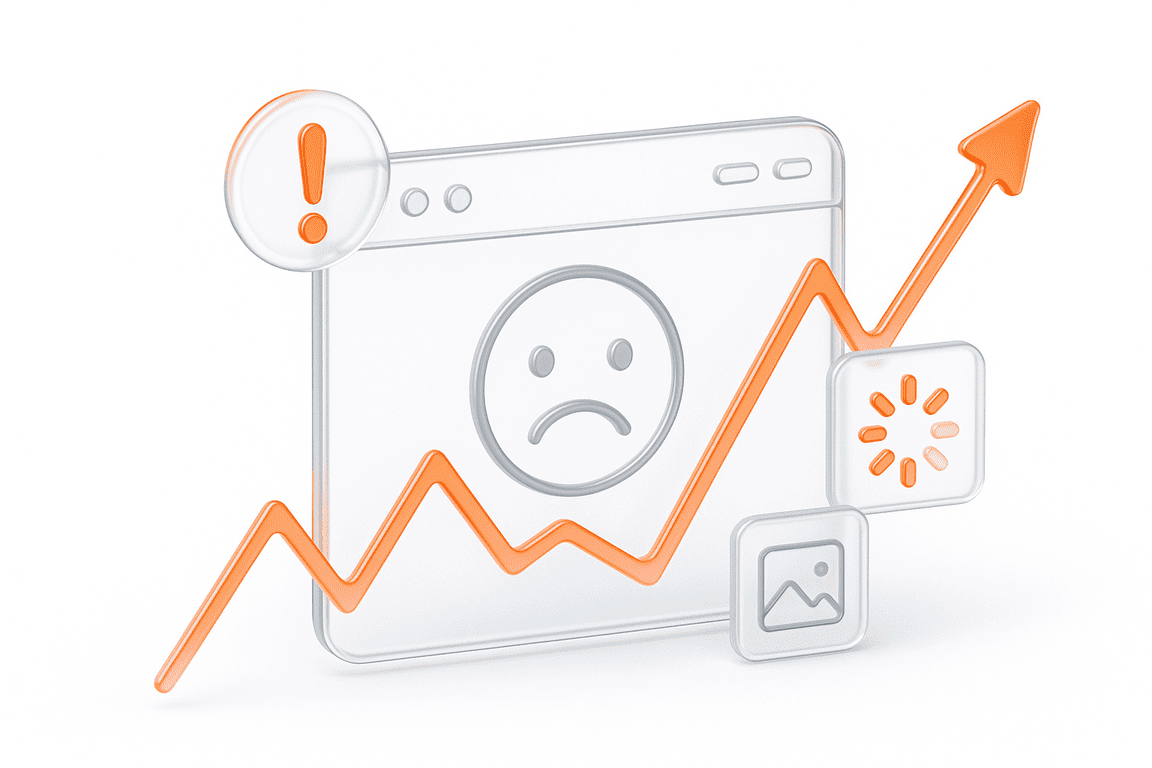In software performance testing, bottlenecks are the hidden culprits behind slow response times and system failures. Identifying these performance constraints early is crucial to maintaining seamless application functionality. This guide dives into bottleneck testing, explaining its purpose, benefits, and best practices. You’ll learn how to detect bottlenecks in system performance, use industry-leading bottleneck testing tools, and optimize your applications to handle high traffic loads efficiently. Whether you’re a developer, tester, or IT professional, this guide provides actionable insights to enhance system throughput and improve user experience. Keep reading to discover the key steps and tools needed to ensure your software runs at peak performance.
What is Bottleneck Testing?
Bottleneck testing is a performance testing technique used to identify system constraints that slow down application response times. A bottleneck occurs when one component—such as the CPU, memory, network, or disk I/O—limits the overall performance of an application. This type of testing helps pinpoint these performance roadblocks, ensuring that critical processes run smoothly under different workloads.
By conducting bottleneck performance testing, teams can analyze how traffic loads affect system efficiency and detect testing bottlenecks before they impact users. Using specialized bottleneck testing software, testers can simulate real-world conditions and evaluate whether a system can handle peak demand while maintaining optimal performance.
Key Benefits of Bottleneck Testing
Bottleneck testing helps organizations identify and eliminate system constraints, ensuring applications run smoothly under varying traffic loads. Below are the key advantages of implementing bottleneck testing software in your performance optimization strategy.
Optimized Performance
By detecting bottlenecks in system processes, teams can allocate resources more efficiently, preventing performance slowdowns. This ensures consistent throughput and faster application response times.
Accelerated Troubleshooting
With bottleneck testing tools, engineers can quickly diagnose performance issues, reducing debugging time and minimizing disruptions in critical processes.
Cost-Effectiveness
Fixing bottlenecks early prevents costly infrastructure upgrades and unexpected downtime, leading to significant savings on operational expenses.
Increases Scalability
A well-optimized system can handle high traffic loads without degradation. Testing bottlenecks helps businesses scale their applications seamlessly as user demands grow.
Improves User Experience
Slow applications frustrate users. By ensuring bottleneck performance testing is part of your development pipeline, you enhance overall usability and customer satisfaction.
Steps in Bottleneck Testing
Effective bottleneck testing follows a structured approach to identify, analyze, and resolve system performance constraints. Below are the key steps involved in the process:
Best Tools for Bottleneck Testing
Choosing the right bottleneck testing tools is essential for identifying performance bottlenecks and ensuring system efficiency. Below are some of the most commonly used tools, each offering unique features for bottleneck performance testing.
PFLB – The Best Bottleneck Testing Tool
PFLB provides enterprise-grade performance testing solutions tailored for large-scale applications. It offers:
With a focus on high-traffic systems, PFLB stands out as the most reliable choice for businesses needing accurate, data-driven performance testing.
JMeter
JMeter is an open-source performance testing tool designed for load testing web applications. It supports:
JMeter is widely used for simulating real-world load conditions but may require additional configuration for deep bottleneck analysis.
Gatling
Gatling specializes in continuous performance testing with a focus on high-load applications. Key features include:
Gatling is ideal for developers looking for an automated way to integrate bottleneck performance testing into CI/CD workflows.
BlazeMeter
BlazeMeter is a cloud-based performance testing platform that enhances bottleneck analysis through:
This tool is well-suited for teams that need flexible cloud-based load testing solutions.
LoadRunner
LoadRunner is a widely-used enterprise solution for comprehensive performance testing. It offers:
LoadRunner is often preferred for enterprise-level bottleneck performance testing, particularly for highly complex infrastructures.
Use Cases of Bottleneck Testing
Bottleneck testing is essential in various performance-critical scenarios, ensuring that applications, systems, and networks can handle expected traffic loads without performance degradation. Below are key use cases where bottleneck testing tools play a crucial role.
Final Thought
At its core, bottleneck testing is about identifying and eliminating performance constraints that hinder system efficiency. Whether it’s a high-traffic website, a complex database, or a payment gateway, ensuring that applications perform optimally under stress is critical to business success.
By using the right bottleneck testing tools and following a structured testing process, businesses can enhance scalability, improve user experience, and prevent costly downtime. A well-optimized system doesn’t just run smoothly — it enables growth, fosters customer trust, and gives businesses the competitive edge they need.
Related insights in blog articles
How Website Performance Impacts E-Commerce Sales and Cart Abandonment

Every e-commerce store has mere milliseconds to make the right impression on shoppers. When prospects land on a product page, they assess every single metric, and e-commerce website performance and speed are the most critical ones. In most scenarios, impatient users will bounce instantly — at the slightest hint of latency caused by high loads […]
10 Signs Your Website Can’t Handle Traffic Spikes: Everything you need to know

Your campaign goes live, clicks start pouring in, and traffic shoots up fast. It’s the moment you’ve been waiting for, until everything slows down. Pages take ages to load, checkout freezes, and visitors disappear before they can buy. It’s a frustrating twist: the success of your marketing draws in more people than your website can […]
Why Averages Lie: Mathematical Methods for Load Testing

Relying on “average” metrics alone makes load testing surprisingly inaccurate. In this article, we’ll show how to avoid the usual traps and walk through practical techniques for mathematically modelling a workload profile, from analyzing variance and correlations to spotting Simpson’s paradox and validating the final model. When a company moves to a new system, the […]
DevDays Europe Conference 2026 – Advance Your Software Development Expertise

DevDays Europe is the ultimate software development conference that aims to bring together the brightest minds and innovators in the software development community. Join the conference for an immersive experience filled with transformative insights, collaborative opportunities, and the latest cutting-edge technology. The DevDays Europe 2024 will be happening both on-site and online, allowing everyone to join the event in their preferred format.
Be the first one to know
We’ll send you a monthly e-mail with all the useful insights that we will have found and analyzed
People love to read
Explore the most popular articles we’ve written so far
- Top 10 Load Testing Tools for 2025: The Deep Dive Sep 9, 2025
- Cloud-based Testing: Key Benefits, Features & Types Dec 5, 2024
- Benefits of Performance Testing for Businesses Sep 4, 2024
- Android vs iOS App Performance Testing: What’s the Difference? Dec 9, 2022
- How to Save Money on Performance Testing? Dec 5, 2022



